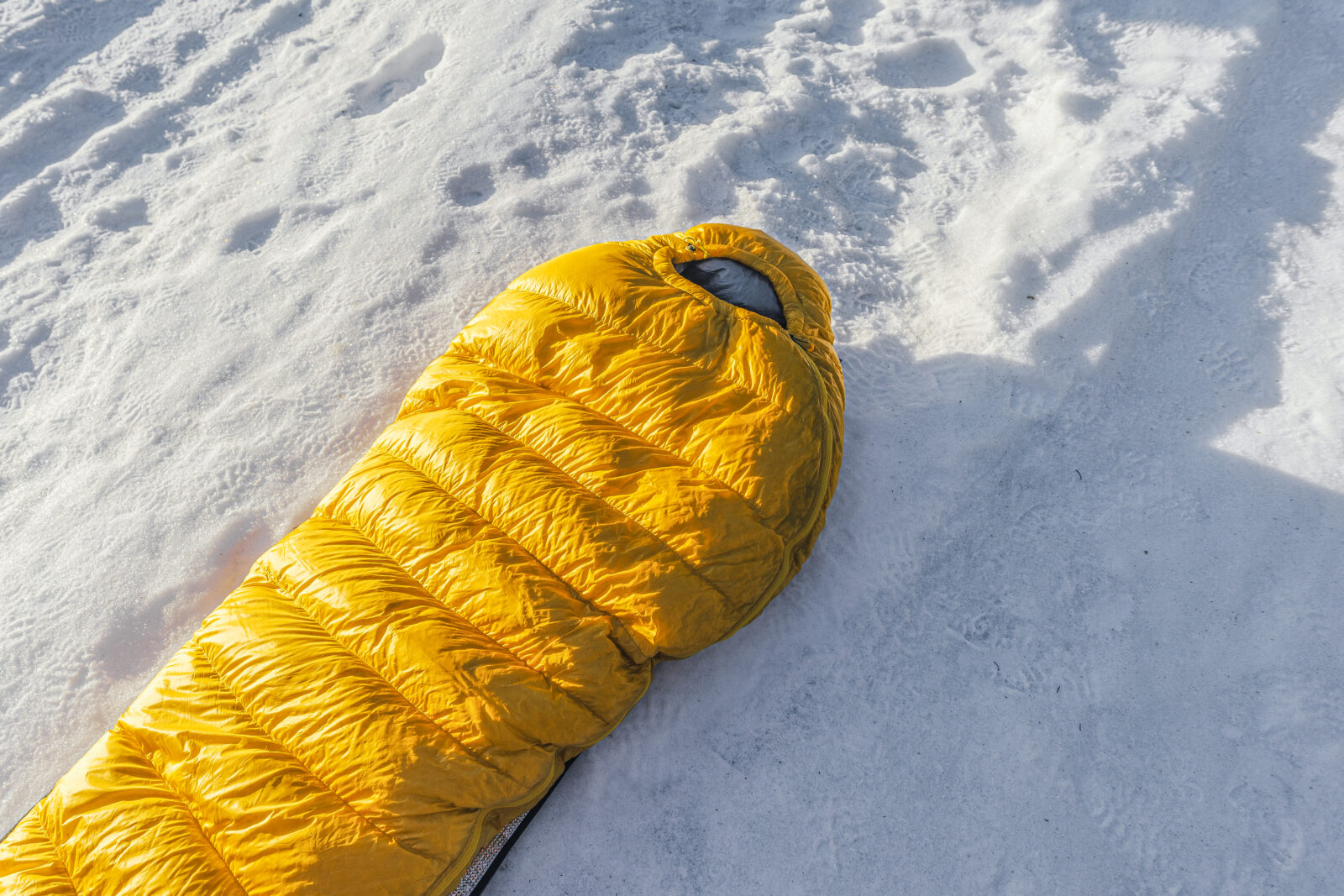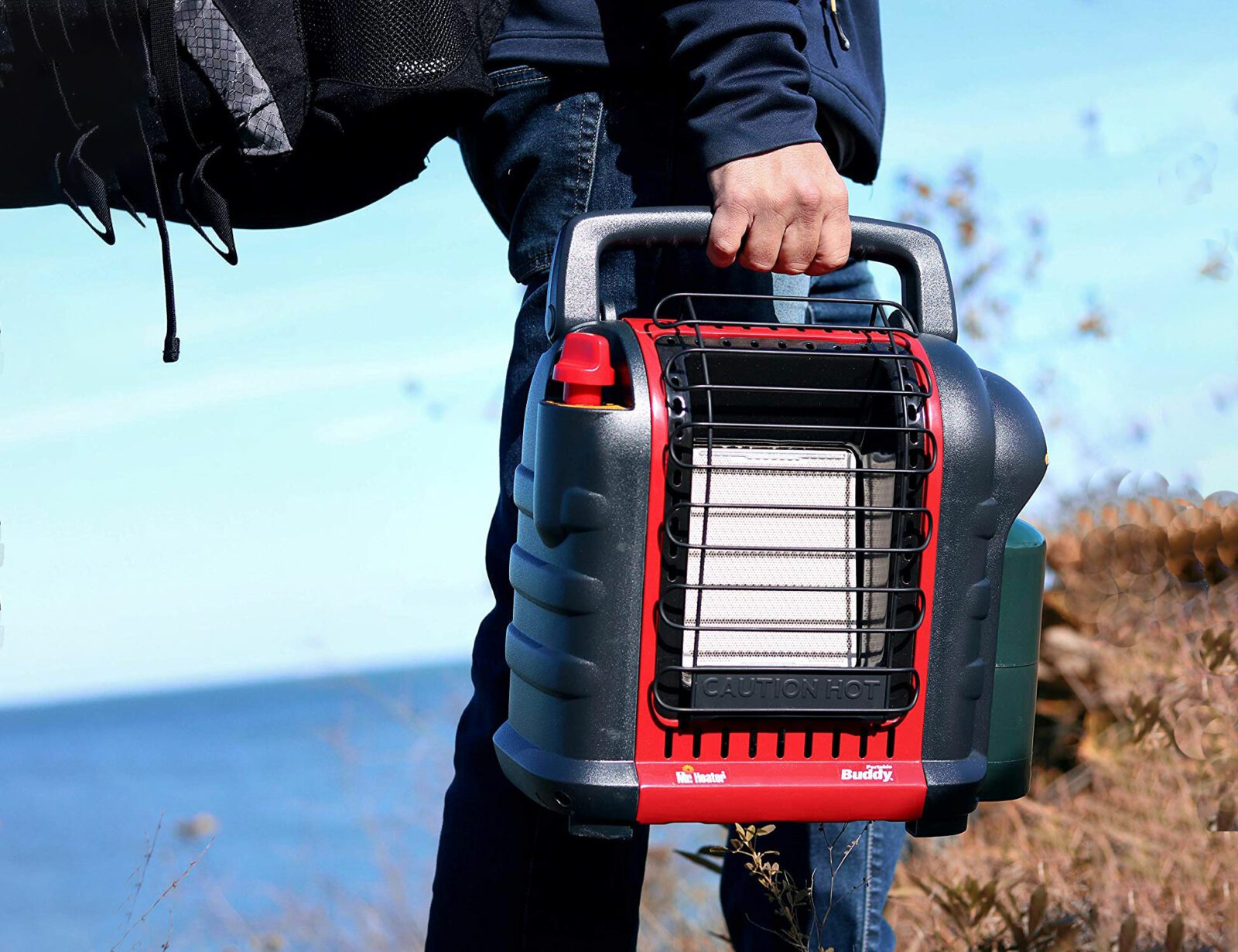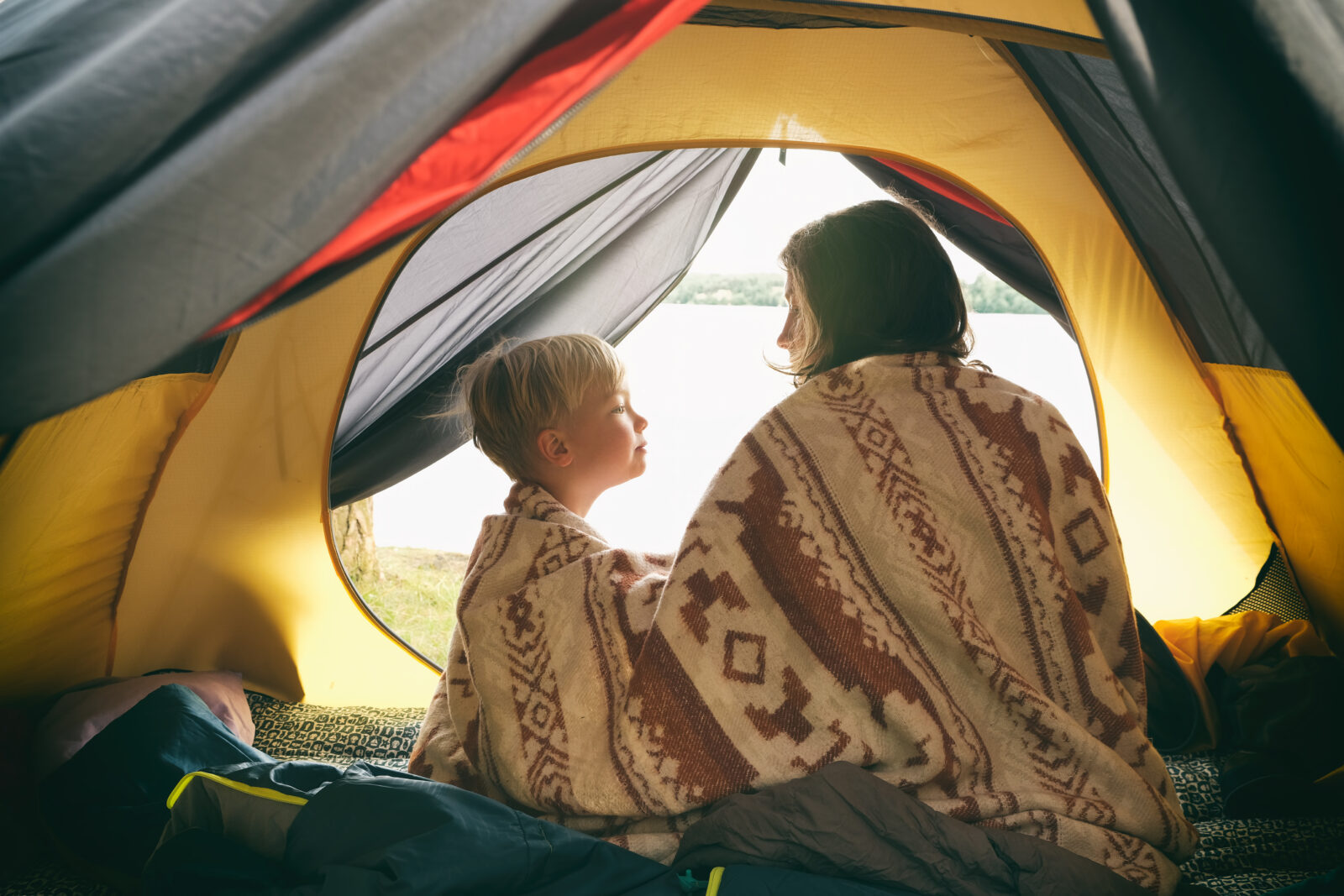Getting excited for your winter camping trip but wondering how to layer properly?
We have all the information you seek.
Layering is of the utmost importance if you want to stay warm and dry while adventuring in the cold. But, doing so requires having your clothing systems dialed before you head out the door.
To ensure that your winter camping adventures are as warm and cozy as possible, we’ve put together this guide to effective wintertime layering, complete with everything you need to know to get started.
Page Contents
Why layer your clothing?
A clothing layering system is an important part of any camping trip, and winter camping adventures to places like Glacier National Park are no exception.
In fact, here are 3 key reasons why you should layer during your next wintertime expedition :
- Enhanced warmth. When winter camping, staying warm is essential. By layering your clothing, you can trap in as much warmth as possible from your body heat to help you stay cozy in the cold.
- Improved comfort. Layering also helps you stay more comfortable while outside by giving you more control over your body temperature. Since layering allows you to quickly remove clothing items with ease, you can quickly adjust your clothing if you feel too hot or too cold.
- Better adaptability to variable weather. A quality clothing layering system also sets you up for success in variable weather conditions, like what you’d find at Rocky Mountain National Park in the winter. With your various layers, you can quickly adapt to unseasonably warm and rainy weather or particularly frigid and snowy temperatures in just a few minutes.
Clothing layering basics
Now that you understand why to layer, it’s time to talk about how to do so effectively for winter camping.
In this section, we’ll discuss the 3 different layers that make up a quality wintertime layering system so you can be ready for your next trip to Yellowstone National Park.
Base layer
Aptly named, base layers are the bottom or inner layers in your clothing system, such as your t-shirts, long underwear, and even your hiking socks.
Base layers are specifically designed to wick away moisture from your body. This means that they help to pull sweat and other types of moisture from your skin so that it can evaporate quickly as you hike.
Moisture-wicking properties are particularly important in the winter as being wet greatly increases your risk of hypothermia.
The majority of base layers on the market are made from a handful of different materials. These include :
- Synthetic. Affordable as can be, synthetic base layers are highly durable, though they tend to get smelly after a few days of hiking.
- Silk. A time-tested classic, silk is a soft and comfortable, albeit expensive, fabric that breathes very well.
- Merino wool. A versatile choice, merino wool is a breathable and super-comfortable natural fiber that doesn’t itch or smell, though it is fairly pricey.
When shopping for base layers, your primary concern is the thickness of your base layers. Most companies sell lightweight, midweight, and expedition weight models, each of which is made in a different thickness to help provide you with a bit of extra warmth or breathability.
For winter camping, mid- or expedition-weight (sometimes called heavyweight) models are ideal.
Mid layer
While your base layers are all about wicking moisture, your mid-layers are designed to keep you warm in the mountains.
Indeed, mid-layers are your insulating layers, so they’re your first line of defense against frigid temperatures. These days, mid-layers are manufactured with one of 3 primary materials, each of which has its own advantages and disadvantages, such as :
- Fleece. Crafted out of polyester and other synthetic fibers, fleece is a type of manufactured insulation that can keep you warm when wet. Fleece is highly affordable and super durable, too, so it’s a popular choice in the mountains. But, it’s not very lightweight or packable, which can be a concern for some hikers.
- Down. Down is a type of natural insulation that’s made with the down plumes of geese and ducks. It’s considered to be the gold standard in insulation because of its superb warmth-to-weight ratio. However, it can’t keep you warm when wet and it’s quite expensive.
- Synthetic. Designed to mimic down for a fraction of the price, synthetic insulation is made from spun polyester fibers. These fibers are highly affordable and can keep you warm when wet. But, they’re not as packable as down.
Buying a mid-layer is always a trade-off between warmth, packability, breathability, and price. As a result, there’s no 1 mid-layer that will work in all environments. If you’re winter camping in a dry locale, like the north rim of the Grand Canyon, down might be ideal.
Meanwhile, winter camping in damp places, like Yosemite National Park, often requires synthetic mid-layers.
Read More : Down vs Synthetic Insulation – Which One Is Better?
Outer layer
The last part of the layering system is your outer layer. Sometimes called your shell layer, the outer layer of any winter camping clothing system is normally a rain jacket and a set of rain pants.
As the outermost layer in your clothing system, outer layers are specifically designed to protect you from the rain and snow. These layers need to be completely waterproof, particularly when camping in snowy environments like Sequoia and Kings Canyon National Parks.
The vast majority of outer layers are made from similar materials. This includes a nylon or polyester shell fabric and then a high-tech waterproof-breathable membrane. These membranes, which often go by brand names, like Gore-Tex or eVent, are designed to allow sweat to escape while keeping rain and snow off your skin.
When shopping for outer layers for winter camping, the important thing to remember is that your rain pants and jackets need to fit over all of your warm layers.
Otherwise, you won’t be able to stay warm and dry at the same time. So, you may need to get a jacket and set of rain pants that are bigger than you’d normally buy in order for them to fit over your other layers.
Layering Examples
At this point, you have a solid understanding of how to layer for winter camping and what to look for when you shop.
To help you conceptualize how all of this works in the real world, we’ve come up with 2 common winter camping situations and what we would wear while camping in these conditions.
Scenerio 1 - Hiking in 20ºF to 30ºF weather
For hiking in relatively warm winter conditions (20ºF to 30ºF), your most important considerations are breathability and moisture-wicking abilities.
So, in these situations, we’d prioritize wearing moisture-wicking mid-weight merino base layers, like the Smartwool Merino 250 Crew Top. If we were feeling a little cold, we might also wear the highly breathable Patagonia Nano Puff Hoody.
Finally, we’d pack a waterproof shell layer, like the Marmot PreCip Eco Jacket and the Marmot PreCip Eco Pants. If it’s not actively snowing outside, though, these outer layers might stay in our pack so that they don’t hamper our breathability on the trail.
Scenerio 2 - Sitting in camp in 0ºF to 10ºF weather
If you’re sitting around camp in cold winter conditions (0ºF to 10ºF), then you need to be particularly focused on staying warm.
In these conditions, it’s best to wear expedition weight base layers, like the Patagonia Capilene Thermal Zip or even the Patagonia R1. Meanwhile, you may need to wear multiple mid-layers, such as the Arc’teryx Cerium SV Hoodie and the Rab Microlight Alpine to stay warm.
On top of all of that, a quality hardshell jacket and rain pants, like the Arc’teryx Beta AR Jacket and the Arc’teryx Zeta SL Pants will go a long way toward keeping you dry while you hang out in the snow while at camp.
Gaby Pilson
Gaby is a professional mountain guide with a master’s degree in outdoor education. She works primarily in the polar regions as an expedition guide, though she can be found hiking, climbing, skiing, sailing, or paddling in some of the world’s most amazing places when not at work.


